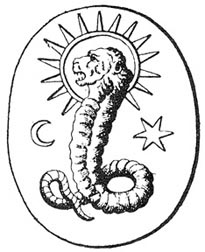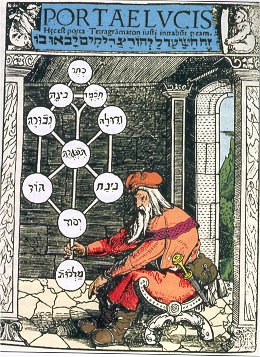|
Maghāriya
Maghāriya were a minor Jewish sect that appeared in the first century BC, their special practice was the keeping of all their literature in caves in the surrounding hills in Palestine. The Maghāriya believed that God is too sublime to mingle with matter, thus they did not believe that God directly created the world, but that an angel, which represents God created the earth (''see'' demiurge and Ptahil). They made their own commentaries on the Bible and the law. Some scholars have identified the Maghāriya as part of the Essenes or the Therapeutae. Other minor Jewish sects include the Bana'im and the Hemerobaptists Hemerobaptists ( Heb. ''Tovelei Shaḥarit''; "Morning Bathers") were a minor Jewish sect and a subsect of the Essenes. The most important feature of the Hemerobaptists is the common use of baptism. Hemerobaptists would baptize every day, rather t .... References {{Reflist Apocalyptic groups Esoteric schools of thought Ascetics Jewish asceticism Jewish religi ... [...More Info...] [...Related Items...] OR: [Wikipedia] [Google] [Baidu] |
Mandaeism
Mandaeism (Classical Mandaic: ࡌࡀࡍࡃࡀࡉࡉࡀ ; Arabic: المندائيّة ), sometimes also known as Nasoraeanism or Sabianism, is a Gnostic, monotheistic and ethnic religion. Its adherents, the Mandaeans, revere Adam, Abel, Seth, Enos, Noah, Shem, Aram, Jesus and especially John the Baptist. Mandaeans consider Adam, Seth, Noah, Shem and John the Baptist prophets with Adam being the founder of the religion and John being the greatest and final prophet. The Mandaeans speak an Eastern Aramaic language known as Mandaic. The name 'Mandaean' comes from the Aramaic ''manda'', meaning knowledge. Within the Middle East, but outside their community, the Mandaeans are more commonly known as the (singular: ), or as Sabians (, ). The term is derived from an Aramaic root related to baptism. The term Sabians derives from the mysterious religious group mentioned three times in the Quran alongside the Jews, the Christians and the Zoroastrians as a 'People of the Book', and ... [...More Info...] [...Related Items...] OR: [Wikipedia] [Google] [Baidu] |
Essenes
The Essenes (; Hebrew: , ''Isiyim''; Greek: Ἐσσηνοί, Ἐσσαῖοι, or Ὀσσαῖοι, ''Essenoi, Essaioi, Ossaioi'') were a mystic Jewish sect during the Second Temple period that flourished from the 2nd century BCE to the 1st century CE. The Jewish historian Josephus records that Essenes existed in large numbers, thousands lived throughout Roman Judaea. They were fewer in number than the Pharisees and the Sadducees, the other two major sects at the time. The Essenes lived in various cities but congregated in communal life dedicated to voluntary poverty, daily immersion, and asceticism (their priestly class practiced celibacy). Most scholars claim they seceded from the Zadokite priests. The Essenes have gained fame in modern times as a result of the discovery of an extensive group of religious documents known as the Dead Sea Scrolls, which are commonly believed to be the Essenes' library. These documents preserve multiple copies of parts of the Hebrew Bible u ... [...More Info...] [...Related Items...] OR: [Wikipedia] [Google] [Baidu] |
Bana'im
Bana'im were a minor Jewish sect and an offshoot of the Essenes during the second century in Palestine. Other minor sects of Judaism include Hypsistarians Hypsistarians, i.e. worshippers of the ''Hypsistos'' ( el, Ὕψιστος, the "Most High" God), and similar variations of the term first appear in the writings of Gregory of Nazianzus (''Orat''. xviii, 5) and Gregory of Nyssa (''Contra Eunom''. ..., Hemerobaptists and the Maghāriya. The name Bana'im occurs only in ''Mikva'ot'' 9:6. The Bana'im put heavy emphasis on the cleanliness of clothing, they believed that garments cannot even have a small mudstain before dipping in purifying water. There exists considerable debate around their activities in Palestine and the meaning of the name, some believe that they would put heavy emphasis on the study of the creation of the world, while some believe that the Bana'im were an Essene order employed with the ax and shovel. Other scholars instead have suggested that the name of the ... [...More Info...] [...Related Items...] OR: [Wikipedia] [Google] [Baidu] |
Hemerobaptists
Hemerobaptists ( Heb. ''Tovelei Shaḥarit''; "Morning Bathers") were a minor Jewish sect and a subsect of the Essenes. The most important feature of the Hemerobaptists is the common use of baptism. Hemerobaptists would baptize every day, rather than once and for all. Baptism was performed before praying every morning in order to be able to pronounce the Name of God with a clean body. In the ''Clementine Homilies'' (ii. 23), John the Baptist and his disciples are mentioned as Hemerobaptists. John's followers may later have been absorbed into the Christian church although some may have gone to the Mandaeans in lower Mesopotamia. The Mandaeans have been associated with the Hemerobaptists on account of both practicing frequent baptism and Mandaeans believing they are disciples of John the Baptist. Hemerobaptists are part of the minor Jewish sects, including the Bana'im and the Maghāriya. Historical references Hegesippus mentions seven sects of the Jews, one of them was the Heme ... [...More Info...] [...Related Items...] OR: [Wikipedia] [Google] [Baidu] |
Mandaeans
Mandaeans ( ar, المندائيون ), also known as Mandaean Sabians ( ) or simply as Sabians ( ), are an ethnoreligious group who are followers of Mandaeism. They believe that John the Baptist was the final and most important prophet. They may have been among the earliest religious groups to practice baptism, as well as among the earliest adherents of Gnosticism, a belief system of which they are the last surviving representatives today. The Mandaeans were originally native speakers of Mandaic, an Eastern Aramaic language, before they nearly all switched to Iraqi Arabic or Persian as their main language. After the invasion of Iraq by the United States and its allies in 2003, the Mandaean community of Iraq, which before the war numbered 60,000-70,000 persons, collapsed due to the rise of Islamic extremism and the absence of protection against it; with most of the community relocating to Iran, Syria and Jordan, or forming diaspora communities beyond the Middle East. Mandea ... [...More Info...] [...Related Items...] OR: [Wikipedia] [Google] [Baidu] |
Judaism
Judaism ( he, ''Yahăḏūṯ'') is an Abrahamic, monotheistic, and ethnic religion comprising the collective religious, cultural, and legal tradition and civilization of the Jewish people. It has its roots as an organized religion in the Middle East during the Bronze Age. Modern Judaism evolved from Yahwism, the religion of ancient Israel and Judah, by the late 6th century BCE, and is thus considered to be one of the oldest monotheistic religions. Judaism is considered by religious Jews to be the expression of the covenant that God established with the Israelites, their ancestors. It encompasses a wide body of texts, practices, theological positions, and forms of organization. The Torah, as it is commonly understood by Jews, is part of the larger text known as the ''Tanakh''. The ''Tanakh'' is also known to secular scholars of religion as the Hebrew Bible, and to Christians as the " Old Testament". The Torah's supplemental oral tradition is represented by later texts s ... [...More Info...] [...Related Items...] OR: [Wikipedia] [Google] [Baidu] |
Demiurge
In the Platonic, Neopythagorean, Middle Platonic, and Neoplatonic schools of philosophy, the demiurge () is an artisan-like figure responsible for fashioning and maintaining the physical universe. The Gnostics adopted the term ''demiurge''. Although a fashioner, the demiurge is not necessarily the same as the Creator figure in the monotheistic sense, because the demiurge itself and the material from which the demiurge fashions the universe are both considered consequences of something else. Depending on the system, they may be considered either uncreated and eternal or the product of some other entity. The word ''demiurge'' is an English word derived from ''demiurgus'', a Latinised form of the Greek or . It was originally a common noun meaning "craftsman" or "artisan", but gradually came to mean "producer", and eventually "creator". The philosophical usage and the proper noun derive from Plato's ''Timaeus'', written 360 BC, where the demiurge is presented as the crea ... [...More Info...] [...Related Items...] OR: [Wikipedia] [Google] [Baidu] |
Ptahil
In Mandaeism, Ptahil ( myz, ࡐࡕࡀࡄࡉࡋ) also known as Ptahil-Uthra (uthra = angel or guardian), is the Fourth Life, the third of three emanations from the First Life, Hayyi Rabbi, after Yushamin and Abatur. Ptahil-Uthra alone does not constitute the demiurge but only fills that role since he is viewed as the creator of the material world in the Ginza Rabba, often holding an inherently malicious character. Name Matthias Norberg believed the name Ptahil to be composed of Aramaic and , therefore meaning "God opened", although the verb can also mean "create" in Mandaic, but not in other Aramaic languages. Subsequent scholars have deemed it more probably derived from the Egyptian theonym 'Ptah' and angelic 'il',Buckley, Jorunn Jacobsen. 2002. ''The Mandaeans: Ancient Texts and Modern People.'' Oxford: Oxford University Press as originally conjectured by Mark Lidzbarski, although Carl H. Kraeling argued that the influence of Ptah on Mesopotamian syncretic Gnostic traditions is ... [...More Info...] [...Related Items...] OR: [Wikipedia] [Google] [Baidu] |
Therapeutae
The Therapeutae were a religious sect which existed in Alexandria and other parts of the ancient Greek world. The primary source concerning the Therapeutae is the ''De vita contemplativa'' ("The Contemplative Life"), traditionally ascribed to the Jewish philosopher Philo of Alexandria (c. 20 BCE – 50 CE). The author appears to have been personally acquainted with them. The author describes the Therapeutae as "philosophers" (cf. I.2) and mentions a group that lived on a low hill by the Lake Mareotis close to Alexandria in circumstances resembling lavrite life (cf. III.22). They were "the best" of a kind given to "perfect goodness" that "exists in many places in the inhabited world" (cf. III.21). The author was unsure of the origin of the name and derives the name Therapeutae/Therapeutides from Greek θεραπεύω in the sense of "cure" or "worship" (cf. I.2). Philo's description of the doctrines and practices of the Therapeutae leaves great ambiguity about what religion they ... [...More Info...] [...Related Items...] OR: [Wikipedia] [Google] [Baidu] |
Apocalyptic Groups
Apocalyptic is from the word apocalypse, referring to the end of the world. Apocalyptic may also refer to: * Apocalyptic literature, a genre of religious writing * Apocalyptic and post-apocalyptic fiction, a subgenre of science fiction, science fantasy or horror fiction involving global catastrophic risk * Apocalypticism Apocalypticism is the religious belief that the end of the world is imminent, even within one's own lifetime. This belief is usually accompanied by the idea that civilization will soon come to a tumultuous end due to some sort of catastrophic ..., the belief that the end of time is near * ''Apocalyptic'' (album), a 2010 album by the Swedish death metal band Evocation * "Apocalyptic" (song), a 2015 song by the American hard rock band Halestorm See also * Apocalypse (other) {{dab ... [...More Info...] [...Related Items...] OR: [Wikipedia] [Google] [Baidu] |
Esoteric Schools Of Thought
Western esotericism, also known as esotericism, esoterism, and sometimes the Western mystery tradition, is a term scholars use to categorise a wide range of loosely related ideas and movements that developed within Western society. These ideas and currents are united since they are largely distinct both from orthodox Judeo-Christian religion and Enlightenment rationalism. Esotericism has pervaded various forms of Western philosophy, religion, pseudoscience, art, literature, and music—and continues to influence intellectual ideas and popular culture. The idea of grouping a wide range of Western traditions and philosophies together under the term ''esotericism'' developed in Europe during the late seventeenth century. Various academics have debated various definitions of Western esotericism. One view adopts a definition from certain esotericist schools of thought themselves, treating "esotericism" as a perennial hidden inner tradition. A second perspective sees esotericism as ... [...More Info...] [...Related Items...] OR: [Wikipedia] [Google] [Baidu] |
Ascetics
Asceticism (; from the el, ἄσκησις, áskesis, exercise', 'training) is a lifestyle characterized by abstinence from sensual pleasures, often for the purpose of pursuing spiritual goals. Ascetics may withdraw from the world for their practices or continue to be part of their society, but typically adopt a frugal lifestyle, characterised by the renunciation of material possessions and physical pleasures, and also spend time fasting while concentrating on the practice of religion or reflection upon spiritual matters. Various individuals have also attempted an ascetic lifestyle to free themselves from addictions, some of them particular to modern life, such as money, alcohol, tobacco, drugs, entertainment, sex, food, etc. Asceticism has been historically observed in many religious traditions, including Buddhism, Jainism, Hinduism, Islam, Christianity, Judaism, Stoicism and Pythagoreanism and contemporary practices continue amongst some religious followers. The practition ... [...More Info...] [...Related Items...] OR: [Wikipedia] [Google] [Baidu] |







